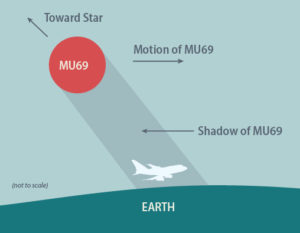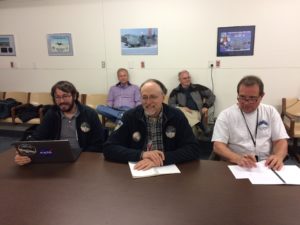Kimberly Ennico Smith, SOFIA Project Scientist
We’ve teamed up with NASA’s New Horizons mission to observe an astronomical event known as an occultation, when an object passes in front of a background star.

An occultation is not the same as an eclipse or a transit. It occurs only when one body completely hides another. For this event, on July 10, a Kuiper Belt object, MU69, is going to block out a background star.
A transit occurs when the body passing in front of the other body only partially blocks it (like Mercury transiting the sun and all those transiting exoplanets that Kepler has been discovering).
Finally, an eclipse occurs when one body passes into the shadow of another body and disappears, at least partially. During the solar eclipse that will occur on August 21 across North America, the moon will eclipse the sun relative to Earth. The moon has occulted, or passed in front of, the sun. Thus, a solar eclipse could perhaps be called a type of solar occultation.
On July 10 we studied MU69 as it occulted a distant star. Two experts aboard SOFIA, Marc Buie and Simon Porter, of the Southwest Research Institute, used measurements from the Hubble Space Telescope to compute exactly where the shadow of MU69 would fall on Earth’s surface.

Based on these calculations, SOFIA needed to be at 16 degrees south latitude, and 175 degrees west longitude at exactly 07:49:11 UTC to catch MU69’s shadow. MU69 and the star lined up for less than 2 seconds because this Kuiper Belt Object is a very tiny (estimated to be between 12-25-miles (20-40-kilometer) across) and approximately 4.1 billion miles from Earth (well past Pluto), so this was a very challenging occultation to capture. But the flight planners and navigators on board can position SOFIA with the precision needed for this brief measurement. We’ve studied occultations of Pluto twice in the past.

The event of July 10th had a predicted ground path as described here.
